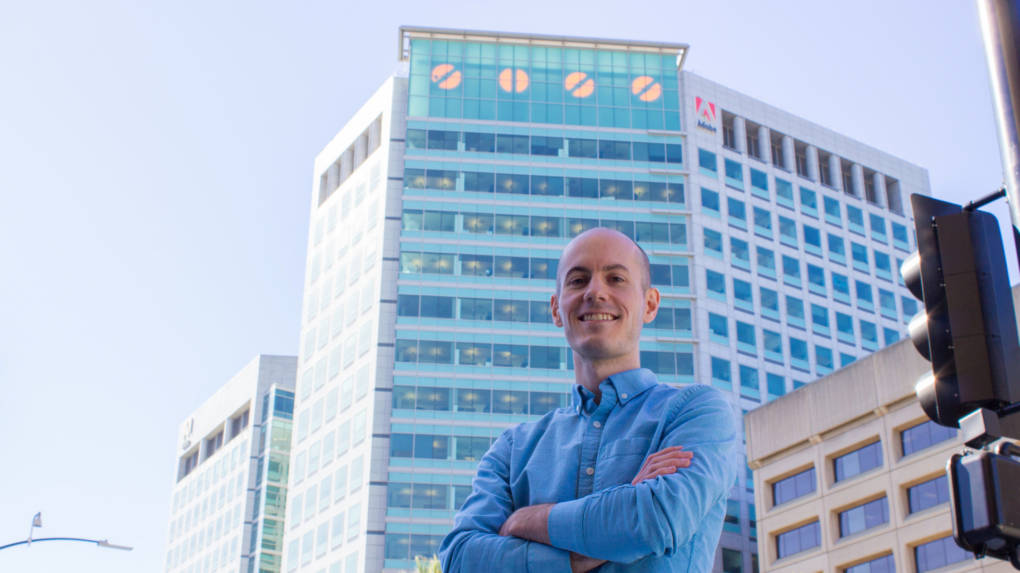US school teacher divined light cryptogram from top floor of Adobe office

Jimmy Waters (Jimmy Waters) - a schoolteacher from the city of Knoxville, Tennessee, USA. An ordinary person who likes to read books. Last summer, the novel “Shouting Lot 49” by the writer Thomas Pynchon fell into his hands. This work is considered one of the clearest examples of postmodern literature.
The book is remarkable in and of itself. But, as it turned out, it is associated with one interesting object - San Jose Semaphore. This is the name of the light installation on the top floor of the Adobe office. This installation has been working for more than ten years, moreover, it is known that it carries in itself some kind of message that no one could unravel for a long time. So, the book helped Weiters to unravel the light cryptogram.
A techno-art-designer from New York named Ben Rubin developed a light puzzle. He says that while working on a project to create an installation, he wanted to create something that everyone would point fingers at and ask: “What is this? What does it say here? What kind of message is this? ” Rubin got his way - they really started talking about this puzzle, it was repeatedly mentioned by various media .
')
By the way, the installation began to work in August 2006. A few months after its installation, two scientists, Mark Snesrud and Bob Mayo, unraveled the coded message. After analyzing and trying to decipher the radio and light signals using various decoding methods, they were able to “read” the message. As it turned out, it was an excerpt from the book mentioned above. The results of the work they presented in their article .
So, when Weitters began searching Google for the title of Pynchon's novel, he came across the mention of San Jose Semaphore. Waithers googled the information on this installation, and found out that there is now another message encoded there that no one has been able to solve for many years.
After that, he decided to solve the puzzle. “I realized that all those who tried to solve it failed and stopped trying long ago. I felt that there was no competition, so it was possible to leisurely engage in solving, ”says Vaters.
The teacher began a thorough preparation for the solution. First, he studied the article by scientists who managed to decipher the installation for the first time. After that, he tried to do a similar job. Waithers decided that every rotational moment of the disk is a figure. He decided to display the numbers graphically. It turned out well:

The newly-born cryptographic specialist saw that the visualization of the installation data looks like a spectrogram of some sound. Having missed this “sound” through a special program, he heard something unintelligible, although he expected to receive clear words and phrases, as it was in the first case. The sound that came out was more like Chip and Dale's recorded conversation than voice or music.
But it was already clear that, most likely, this is some kind of phrase, recorded with very high speed. Vayters decided to slow down the audio recording and that's what happened. It turned out that the original audio recording was accelerated 5.5 times.
What was encrypted in the installation turned out to be the phrase “This is one small step for a man and a huge leap for humanity” from an audio recording by astronaut Neil Armstrong. He said this when he first set foot on the surface of the moon.
The author of the installation, when he learned that the puzzle had been solved, was delighted: “I liked that Jimmy came to the conclusion that this could be audio. This time everything was more complicated. ”
As a reward for the decision, Withers received free tickets to San José and back. In addition, Adobe has provided its Creative Cloud software to the school where the quick-witted teacher works. This software was licensed for two computer classes (40 licenses totaling one year). And the company gave the school a 3D printer.
Naturally, Adobe asked Rubin to come up with a third puzzle right after the second one was solved. Interestingly, two scientists, discussed above, worked on the solution for about two months. It took Vater only a month to understand the meaning of the message hidden in the installation. He was greatly helped by the work of his predecessors, which explains such a significant gain in time.

School teacher Jimmy Weitters solved the puzzle San Jose Semaphore 2.0
As for Rubin, he still doesn’t know what puzzle to fix this time. But he is in search of an idea. The author of the previous riddles says that he simply represents what the signal of aliens, intelligent creatures who sent information about themselves into space, may look like. Perhaps San Jose Semaphore 3.0 will be entirely based on this idea.
Rubin promises to develop a new installation by the end of this summer. “Semaphore intrigues people - they are captured by these mysterious spinning discs,” says Siri Lakovitz, a spokesman for Adobe.
Source: https://habr.com/ru/post/402363/
All Articles